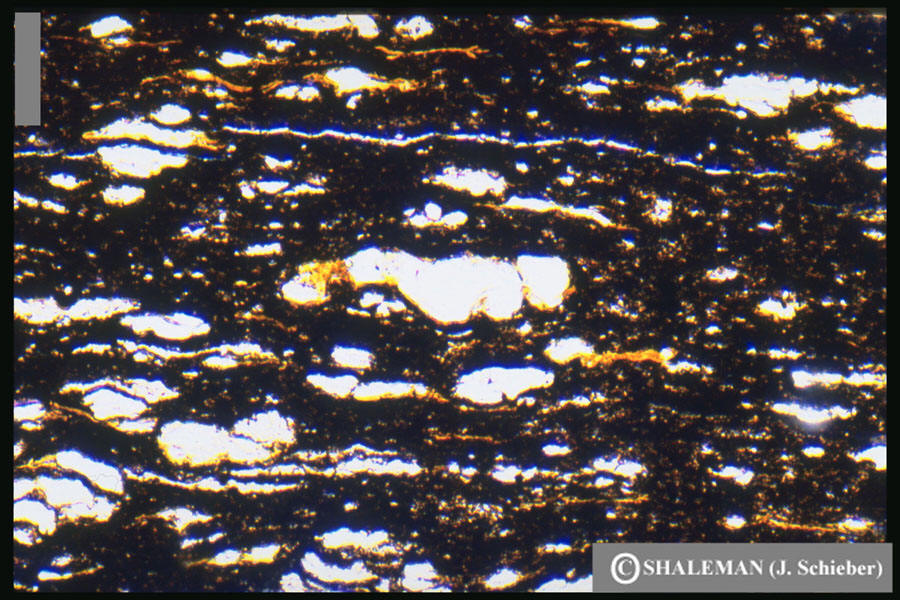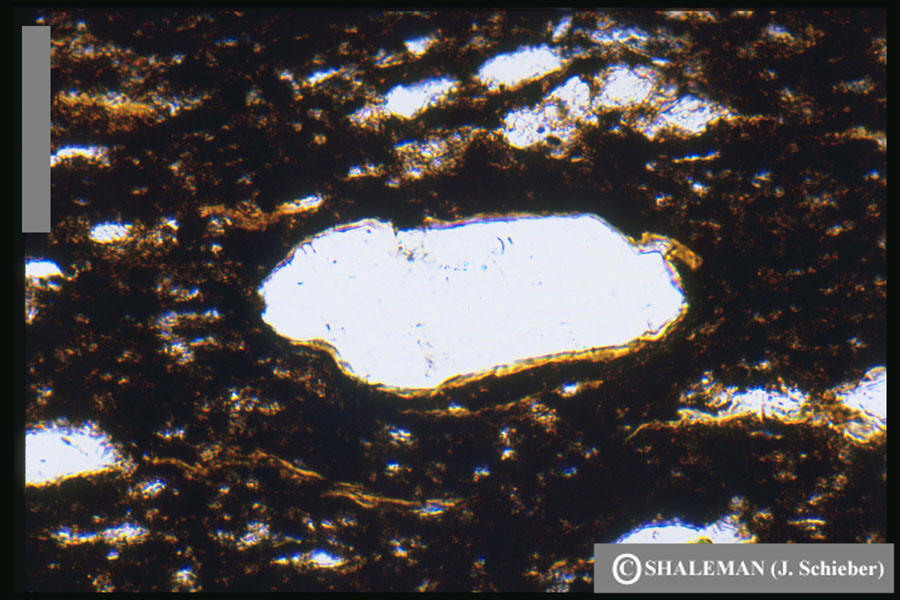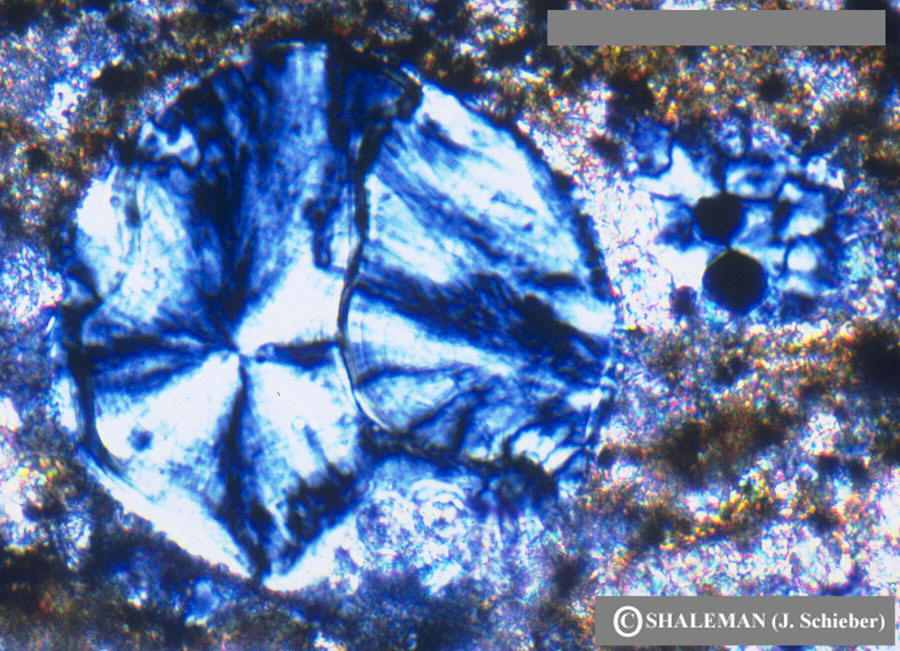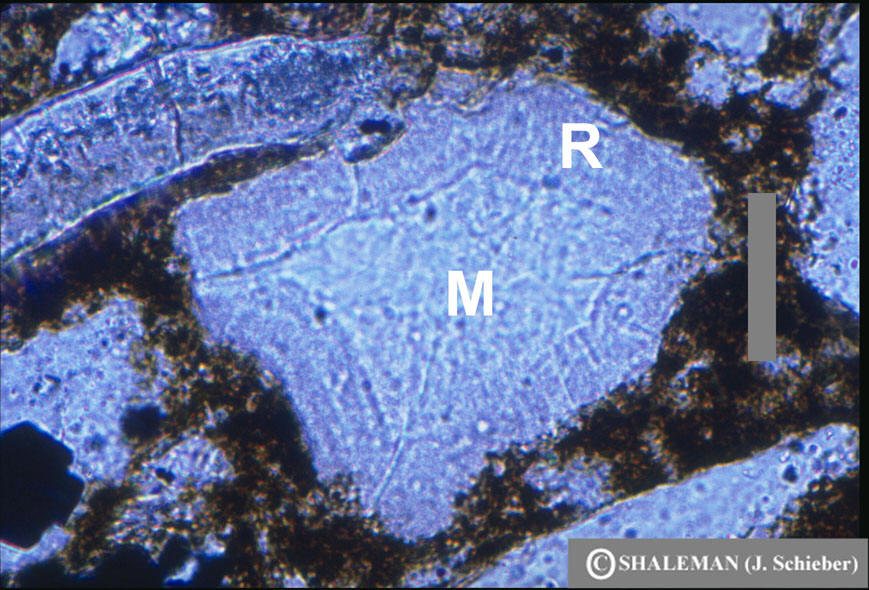
 |
|
|
|
|
|
|
|
|
Silica Filled Cysts in the Chattanooga Shale |
|
| Silica filled cysts in the
Chattanooga Shale (Late Devonian) are a potential source of "in
situ" silt to sand-sized quartz grains. Although these quartz grains
may appear detrital at first glance, and thus extrabasinal, they
actually formed during early diagenesis. Radiolaria that were a
significant part of the biogenic sediment contribution dissolved
while being buried a few decimeters within the sediment, and as a
result pore water silica concentrations rose to saturation and
chalcedony precipitated in available pore spaces, such as algal
cysts. The following four pictures illustrate these grains.
Schieber, J., 1996. Early diagenetic silica deposition in algal cysts and spores: A source of sand in black shales? Journal of Sedimentary Research, v. 66, p. 175-183. download PDF file (left click on link and click on "Save as"...) Schieber, J., Krinsley, D., and Riciputi, L., 2000, Diagenetic origin of quartz silt in mudstones and implications for silica cycling. Nature, v. 406, p. 981-985. download PDF file (left click on link and click on "Save as"...) |
|
 |
|
| Photomicrograph of Chattanooga black shale with abundant silica filled cysts (bright spots). Most cysts have been partially compressed. Scale bar is 0.1 mm long. | |
 |
|
| Photomicrograph (close-up) of partially compressed silica filled cyst. The quartz grain in the center is a single crystal, and is surrounded by the organic cyst wall (brownish membrane). The scale bar is 0.1 mm long. | |
 |
|
| Photomicrograph of spherical cyst in dolomitic shale bed. Shows the radial fibrous texture of chalcedony (crossed polarizers) that infills the cyst. The scale bar is 0.1 mm long. | |
 |
|
| Photomicrograph of a cyst quartz grain in a sandstone bed. The organic cyst wall has been removed during reworking, but the grain still shows an outer rim of fibrous chalcedony (marked R), and a central portion that is filled with megaquartz (marked M). The scale bar is 0.05 mm long. | |
|
|
|
| Back to SHALE RESEARCH LAB Main Page | |
| Back to IU Department of Geological Sciences | |
|
© Jürgen Schieber, IU Bloomington Department of
Geosciences |
|